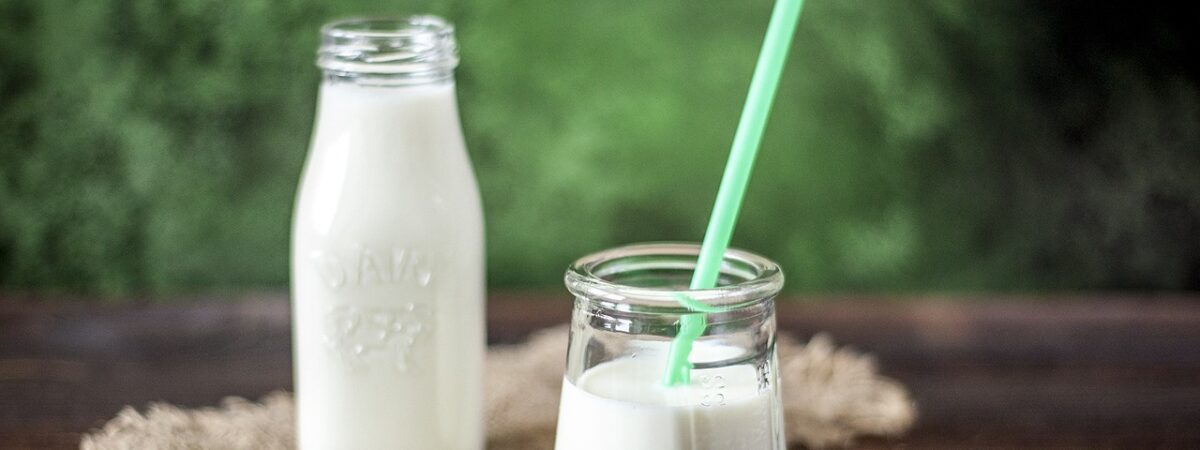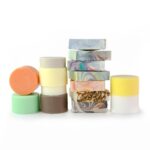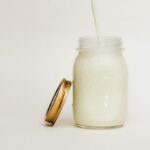I had never considered making yoghurt at home but the lack of options in glass jars here in NZ sparked me to start researching exactly how it’s done. I was pleasantly surprised to find that it’s really easy to do and besides the simple preparation it really is just a matter of waiting.
Making your own yoghurt can take a bit of experimentation to get your perfect taste and consistency and there are a few variables which affect how the yoghurt turns out each time. I recommend trying a few different methods and starters until you figure out what works for you and then you can develop a routine.
We make ours once a week and it lasts a week of breakfasts and the occasional dessert and keeps well in the fridge. It saves us money as it’s cheaper than buying supermarket yoghurt and it also means we’re cutting out a whole lot of plastic – win win!
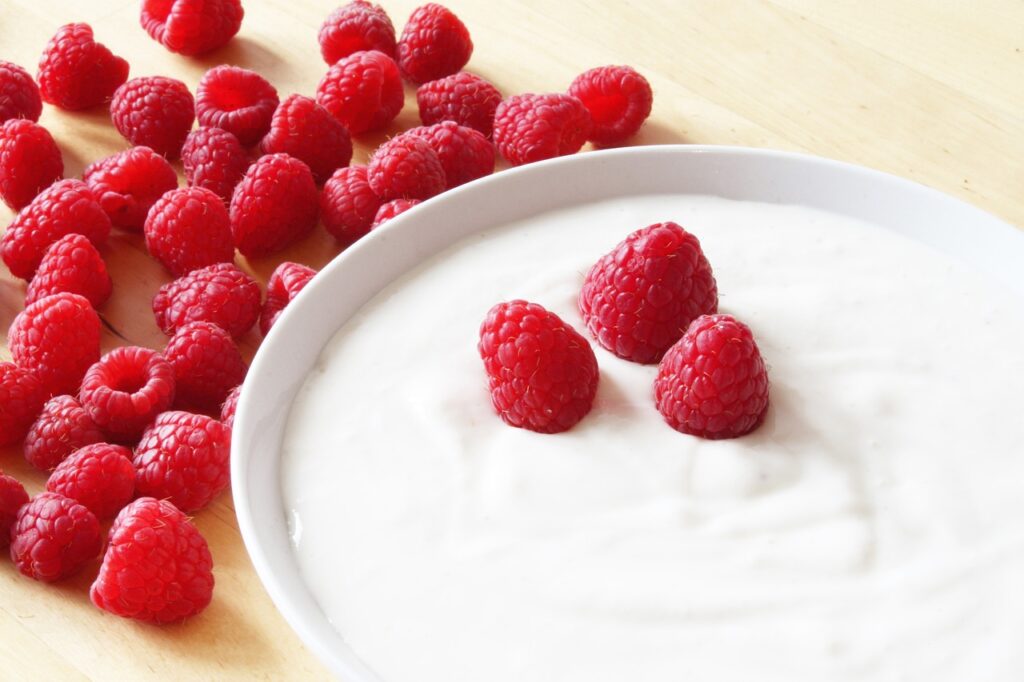
To make yoghurt at home you will need:
¼ cup of unsweetened yoghurt (to make your first batch you’ll obviously need to have some from the supermarket but after you can just use the last bit from the previous batch)
- 1L milk
- A thermometer
- 2 large pots that fit inside each other
How to make your own yoghurt:
Boil the milk
The milk needs to be heated to 93°C slowly. The best way to do this is to boil water in a large pot and place a smaller pot with the milk inside it. This slows the heating process down although I often find I need to do the last minute or so with the milk directly on the element. Make sure you stir during the process, the milk should get a little frothy.
Cool the milk
Place the pot of milk in a basin of cold water to speed up the cooling process. Keep your thermometer in to monitor the temperature. When the milk has cooled to 43°C remove it from the basin/bowl.
Mix in the yoghurt
You can just pour it straight in and stir. I mix a small amount of warm milk into the yoghurt first to make it smoother and then mix it all together. It doesn’t really matter as long as you are left with a smooth mixture.
Incubate
This is the longest part of the process but also the easiest. Simply leave your yoghurt in a warm place for 6-8 hours (it can be longer if you want but too long will risk it becoming sour). The temperature needs to be consistent and about 35-45°C. There are several ways to do this which I will discuss below.
Refrigerate
Once your yoghurt has thickened you can drain off some of the excess whey to before mixing, this will make your yoghurt thicker or you can even strain it through a sieve lined with a cheesecloth for proper thick Greek-style yoghurt. Give it a whisk and transfer it to a jar or container if you didn’t do so all ready before incubation. It then needs to be refrigerated and will last about a week. Make sure you save the last ¼ c for your next batch!
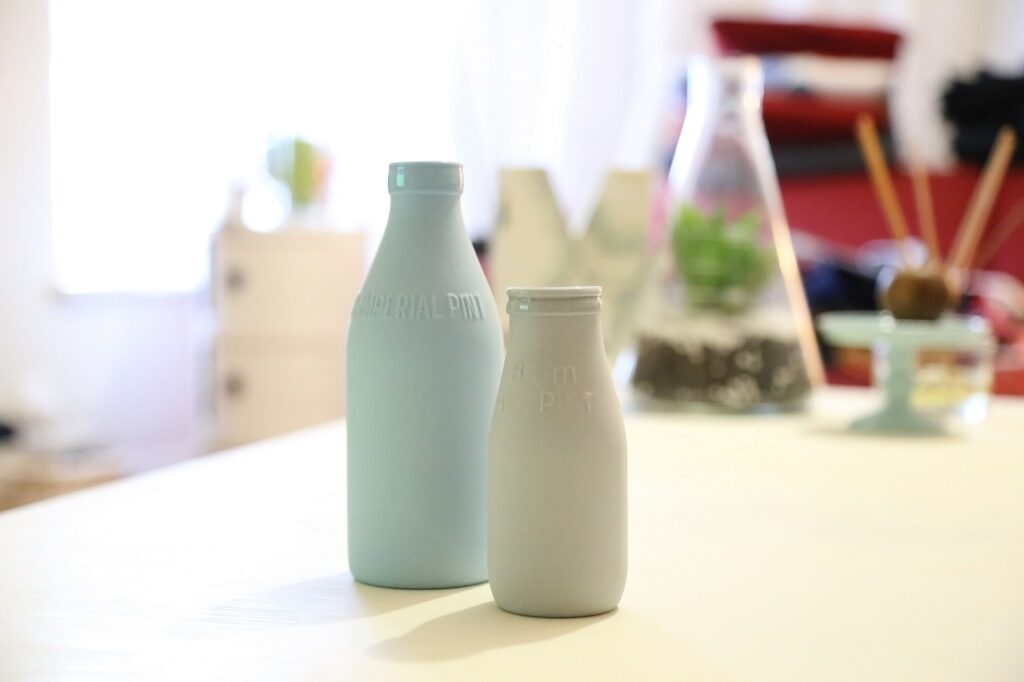
Ways to vary your homemade yoghurt making method
The yoghurt you use
The yoghurt you use as a starter has an effect on how the yoghurt turns out depending on what active cultures it has as well as any thickeners or flavouring. It is best to use , unsweetened yoghurt with as few additives as possible. I use yoghurt and this makes my finished product thicker and creamier than when I’ve used other yoghurts.
The milk you use
Essentially any milk will work. I use an organic full cream milk for mine which gives it a fuller flavour but if you prefer a trim option this works as well.
How you incubate
This can be a difficult process if you don’t have a yoghurt maker. I trialled several methods before I found my preferred option. Mostly it comes down to whether you’ll be monitoring the process, or will do it overnight, while at work etc. Here are some good methods for incubating homemade yoghurt:
- A sunroom: If you can leave your yoghurt all day in a warm sunny room this will usually do the trick. I keep mine in the pot with the lid on and wrap some towels around it.
- The oven: If your oven has a low setting this can work well and can be left overnight. If not, you can also heat the oven and then turn it off to keep it below 50°C.
- A pot of warm water: Use your thermometer to get the water to the right temperature (a little warmer is ok as it won’t be directly in contact with the yoghurt). Place the yoghurt in a sealed container in the pot and cover. Wrap the pot in a towel. You may need to add a little boiling water after a couple of hours to keep it warm.

